Easy Oil Painting Idea for Beginners
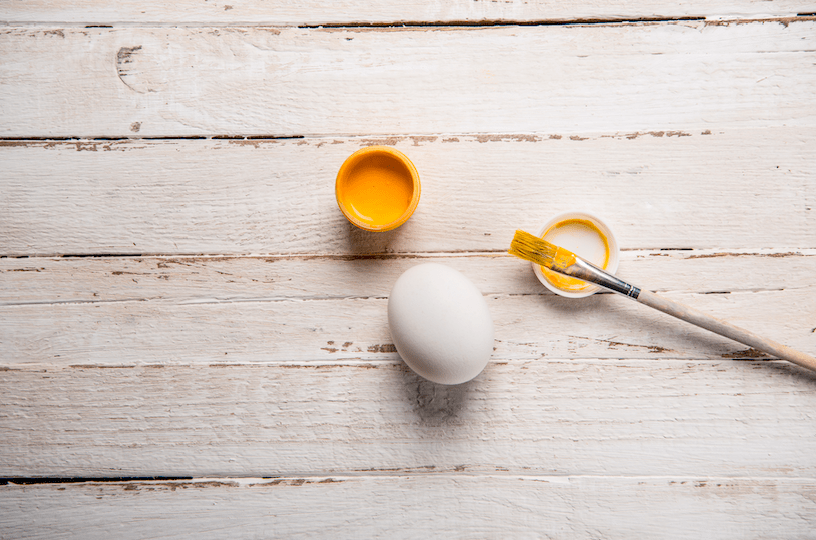
If you’re an oil painter looking for a idea to start that will help expand your skills and give you a direction to work in, here's a beginner oil painting assignment that you’ve got to try: painting an egg. Sure, it may not sound as exciting as a realistic portrait or a sweeping landscape, but there’s so much you can get out of taking on an egg as a subject. In this blog post, we’ll give you the details of exactly what this project entails, as well as why you should bother doing it in the first place.
Why Paint an Egg
It’s no secret that eggs aren’t the world’s sexiest subject matter, even as far as still lifes go. But there’s a reason that this is a classic beginning art project.
First, it’s accessible. Nearly everybody has an egg or twelve in the fridge.
But, more importantly, painting an egg can be incredibly educational, teaching you about a myriad of foundational art concepts that you’ll have to draw on for as long as your career (or hobby) as an artist continues.How to Paint an Egg
When it comes to this painting idea, simplicity is the name of the game. You want to lean into the beauty of keeping things straightforward and plain. This is the principle that you should keep in mind to guide you through every step of this project.
Step One: Start with a Simple Color Palette
One of the advantages of painting an egg is that you don’t have to go out and buy paints in every color of the rainbow. In fact, you can stick with just a simple palette of:
- Black
- White
- Warm red
- Cool red
- Warm green
- Cool green
- Warm blue
- Cool blue
From there, you can mix any other color that you could possibly need. Would it potentially be easier to go wild in the art store and just buy dozens of different colors? Sure, maybe. But as a beginning artist, simplicity is key. Why? Because constraints are a beautiful thing. They force you to get creative and find solutions. There’s no better way to learn and grow. Often, you’ll find that being limited in some way - whether with time, supplies, or subject matter - will allow you to be far more creative and inventive than having every choice in the world.
Step Two: Placement
Place your egg on a piece of white paper or a black cloth and light it with a direct light source, like a desk lamp.
Step Three: Paint, Focusing on Light and Shadow
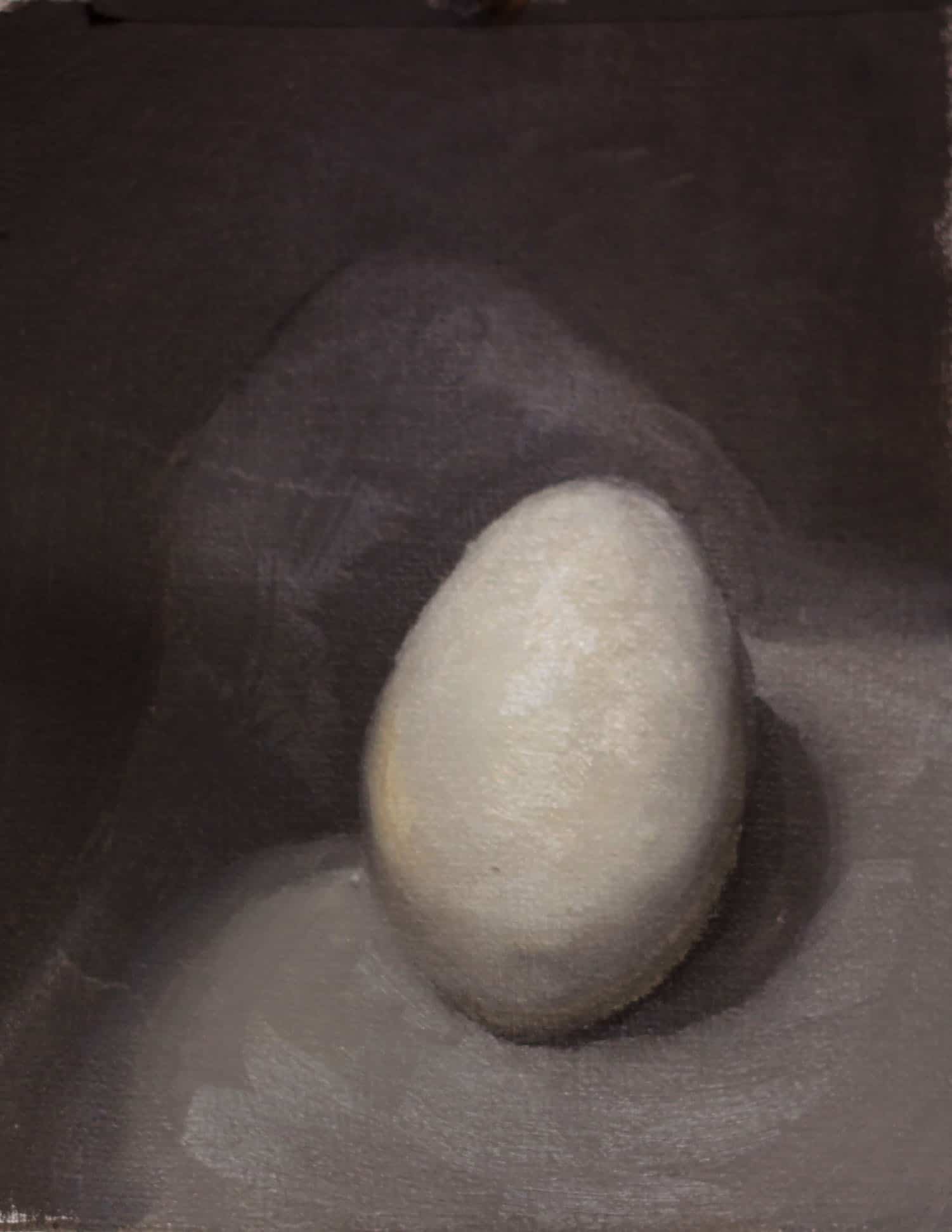
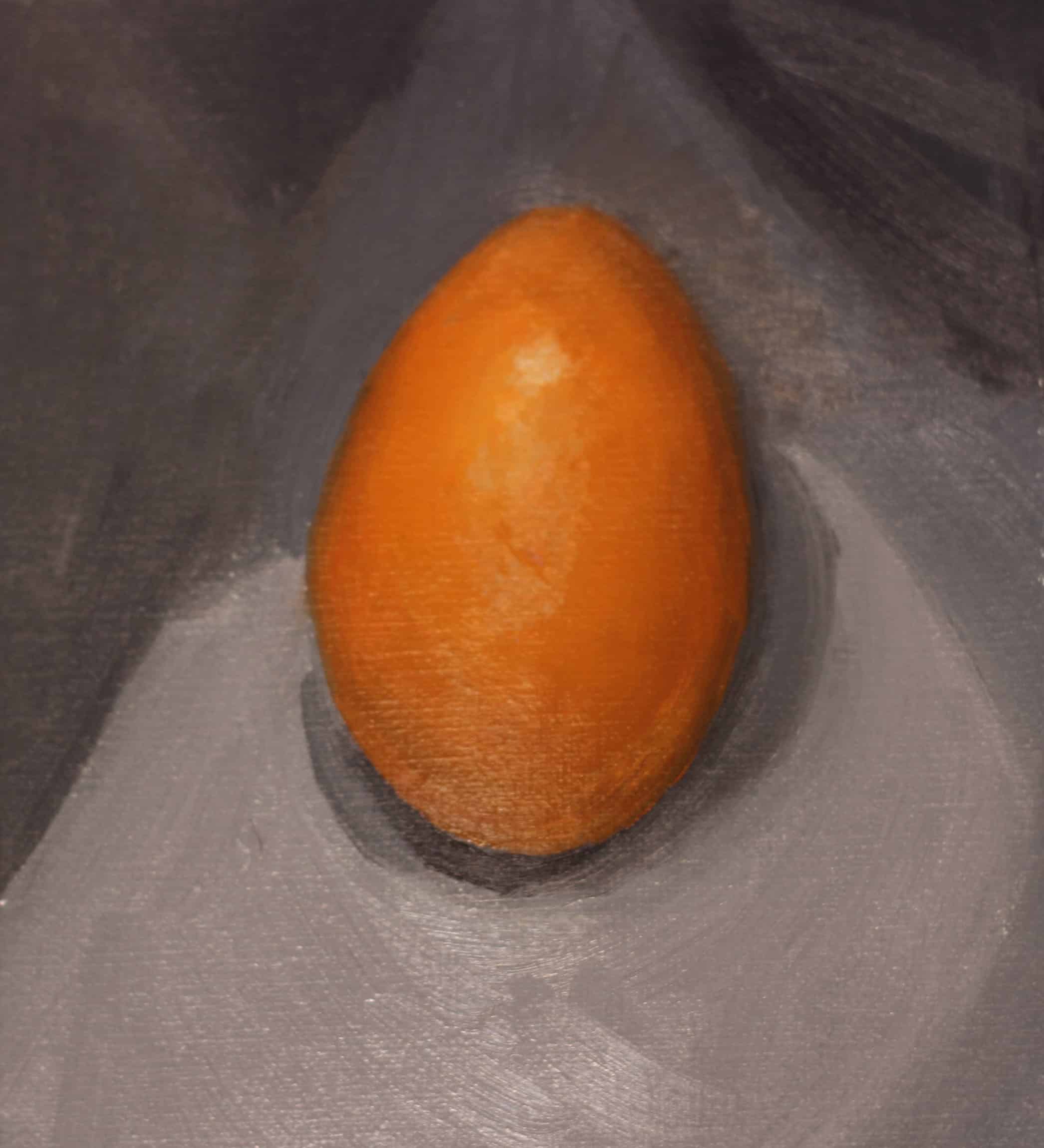
To make your egg look three-dimensional, your goal will be to capture the light on its form. You’ll do so by paying special attention to light and shadow. The edge, where the form transitions from light to shadow, is called the terminator.
There are two different types of shadows you’ll notice from your egg. Form shadow is caused by part of the object not being exposed to the light source. The cast shadow is caused by the object blocking the light from hitting another form. In your painting, the cast shadow will be on the piece of white paper and the form shadow will be on the part of the egg facing away from the light.
Note that shadows aren’t just black. There will be reflected light bouncing from the paper into the egg’s shadow. Further, the form shadow will be the same hue as the object. That’s because the hue of an object stays the same from light to shadow; it’s the value and chroma that change. If your egg is white, it may all come at as different values of gray, but you can give yourself an extra challenge by using an egg with color in order to practice painting the color of shadows.
In the light zone of the form, there will be halftone, planes partially hit by the direct light, center light, where the form points directly at the light, and highlight, a reflection of the light source. The highlight moves depending on where the viewer is.
All of this - form shadow, cast shadow, terminator, halftone, center light, and highlight - will be what you aim to capture in this painting.
Step Four: Move Your Light Source and Start Again
The final step in painting an egg is to see how the egg transforms completely when the light source is moved. Repainting the egg this way will really train you to paint what you see when it comes to light and shadow. There’s no better way to learn the fundamentals.
Who Paints Eggs?
Even though this is a common and easy oil painting idea for beginners, it’s also a subject that seasoned artists continually explore and go back to.
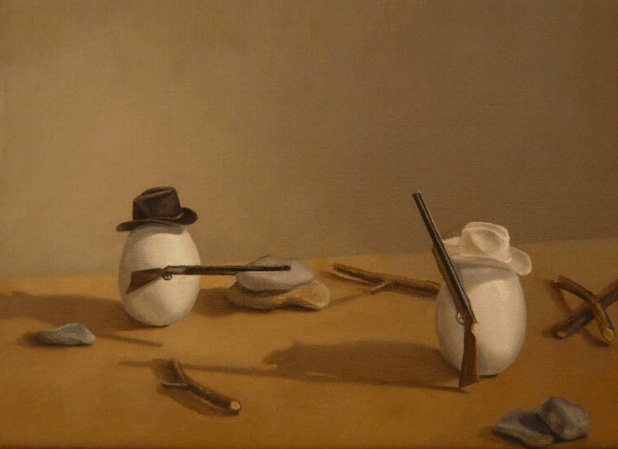
For example, working artist Lucy Kalian has put a creative spin on eggs in her paintings “Grading Day” and “Mom Always Liked You Best.”
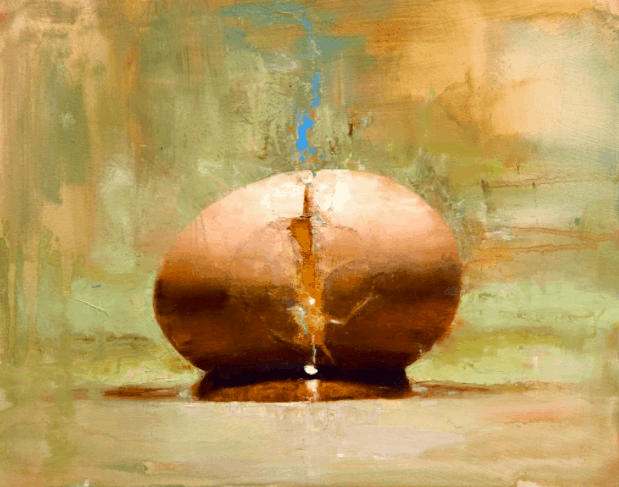
Scott Conary has returned to the egg again and again for paintings like "Monument."
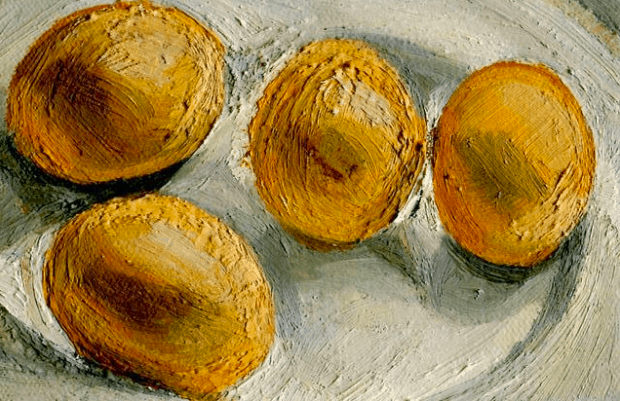
Heck, even celebrated British portraitist Lucian Freud painted eggs in “Four Eggs on a Plate.”
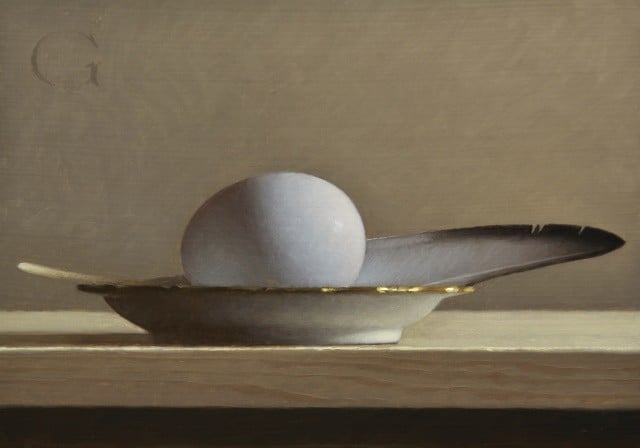
David Gray - Egg and Feather 1
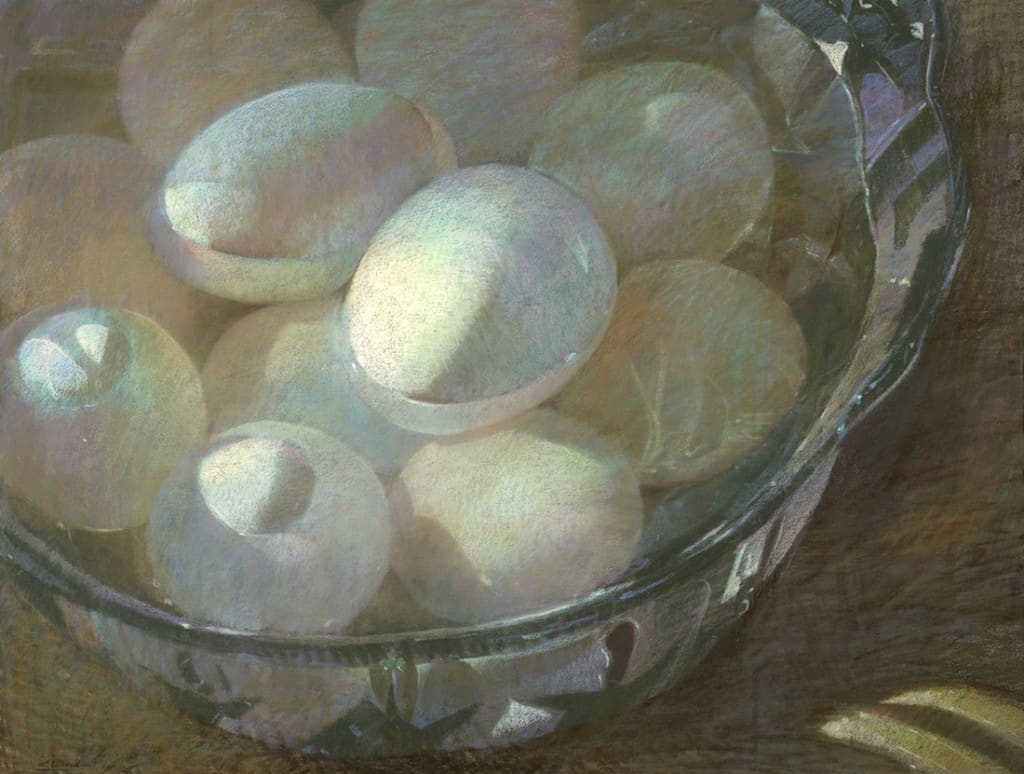
Sally Strand - Eggs Underwater
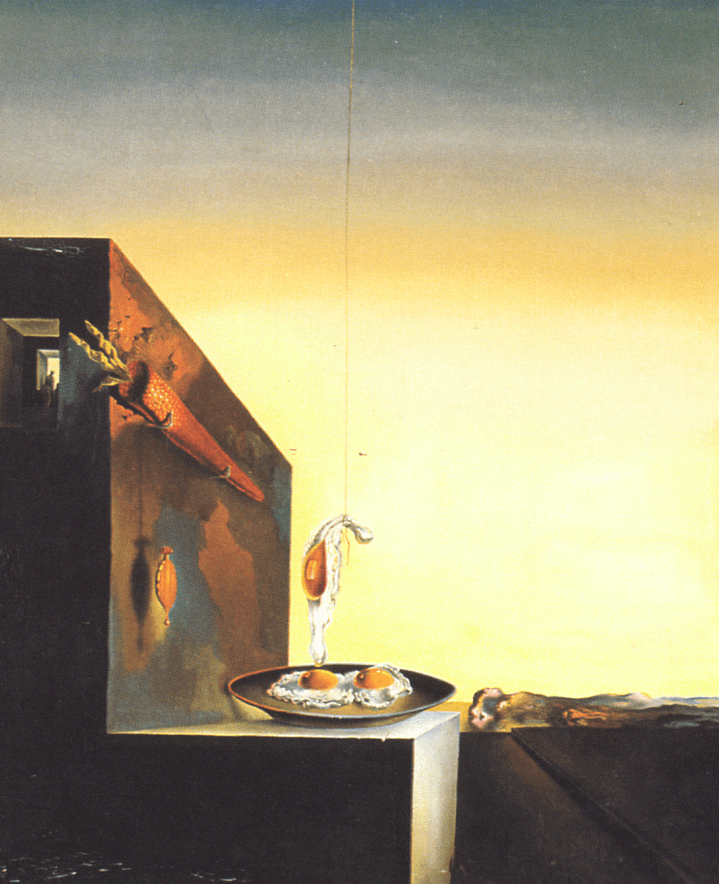
Salvador Dali, “Eggs on Plate without the Flat”
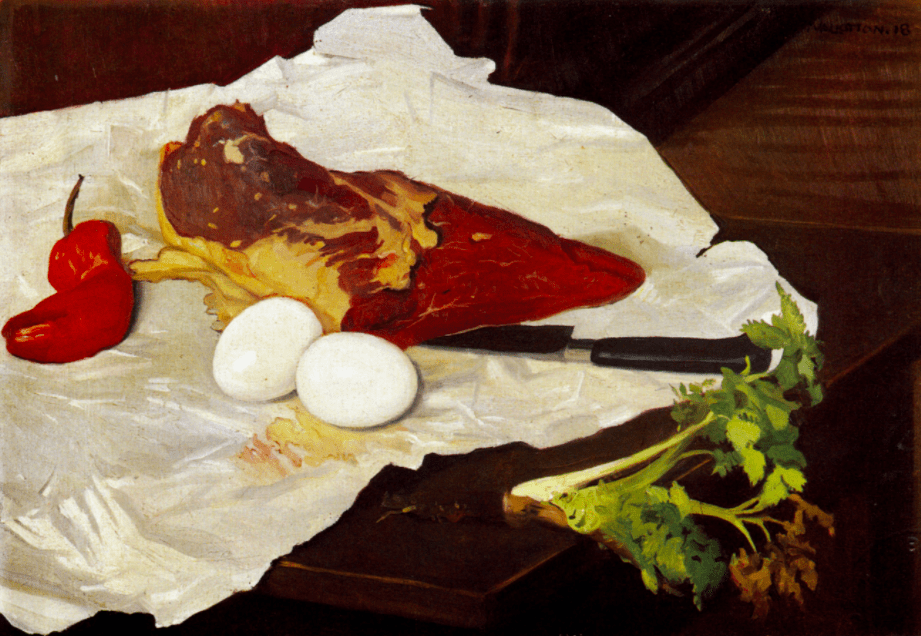
Felix Vallotton, "Meat and Eggs"
If this subject can capture the imagination and offer artistic interest and gratification to these incredible artists, you’re sure to be able to get something out of it, too. So what are you waiting for? Find your egg and get cracking!
If you tried this easy oil painting idea for beginners, let me know in the comments or tag me on instagram - I'd love to see it!

Great idea! Thank you for this post. I really enjoyed seeing the paintings of eggs by well known artists and masters. Not just for beginners. 😉
Hey Debbie! Glad you liked it and YES painting eggs is a good challenge for everyone! 🥚💜